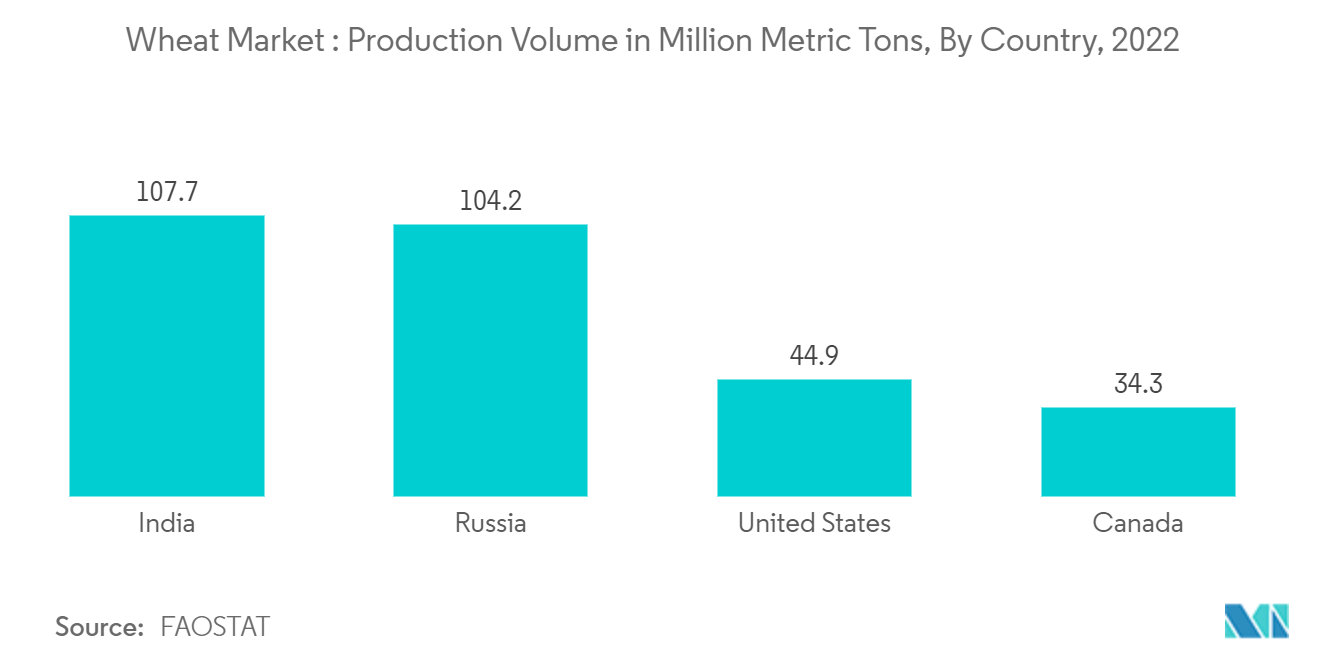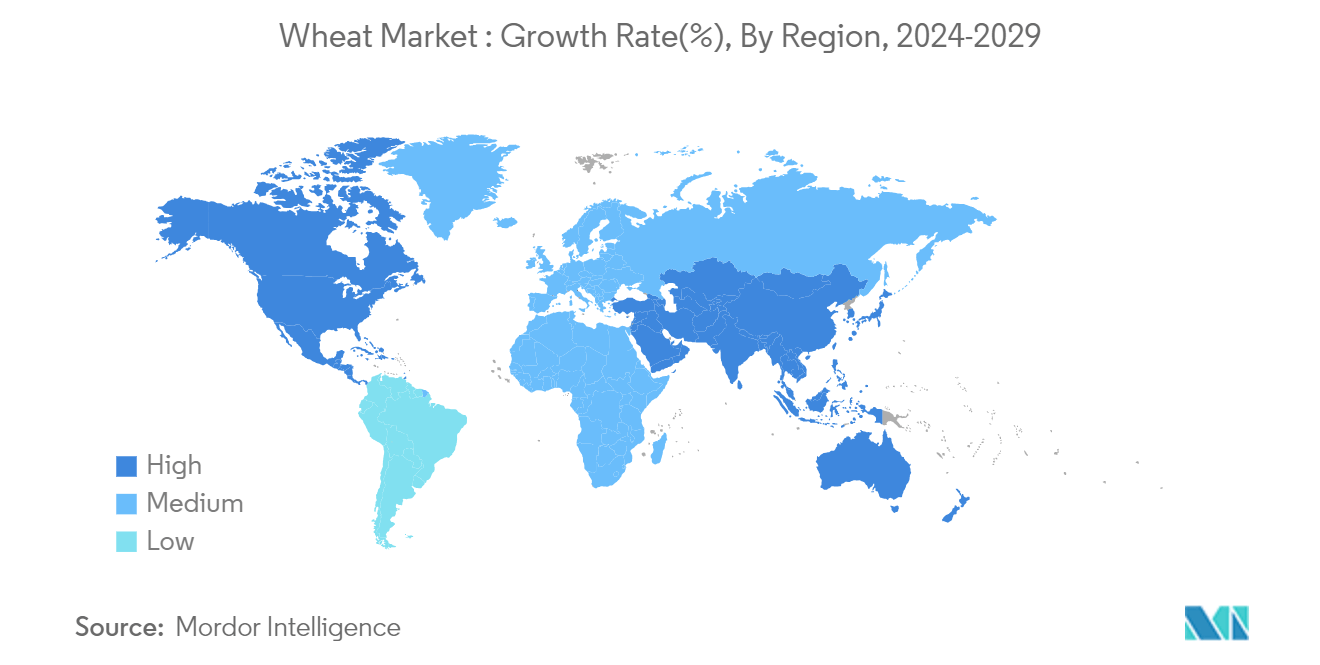Market Trends of Global Wheat Industry
Increasing Wheat Production
Wheat is one of the principal cereal grains produced and consumed globally. It covers a land area more than any other commercial crop and remains the most important grain food source for human consumption. In addition, wheat is the major source of carbohydrates in the diet of people from many countries, including Australia, most of Europe, Northern Asia, and Northern Africa. Most wheat is consumed within the country where it is produced, although roughly one-fifth of global annual production is exported.
The countries with the highest volumes of wheat production in 2020 were China (134.2 million metric tons), India (107.6 million metric tons), and Russia (85.9 million metric tons), together accounting for 43% of the global production. These countries were followed by the United States, Canada, France, Pakistan, Ukraine, Germany, Turkey, Argentina, and Australia, which accounted for a further 31.8%. These are some of the key factors that are driving the wheat market globally.
Further, France holds the top position as the primary cereal producer in the European Union. According to the International Grains Council (IGC), Germany's total grain production in 2022 reached 59.9 million metric tons, representing 22% of the EU's overall output. The state of Centre in France has the highest production of wheat, accounting for 16% of the total wheat supply, followed by Picardie, the second-largest producer of wheat, accounting for 10% of all the wheat produced in France. The wheat production in Germany for 2022 was estimated to be 34.7 million metric tons, which rose from the 2019 figure of 30.1 million metric tons.
Likewise, Canada is one of the largest wheat producers globally. Canadian wheat classes are categorized as Western Canadian or Eastern Canadian by the regions where the varieties are grown. The major regions of spring wheat production in Canada comprises the provinces of Alberta, Saskatchewan, and Manitoba. Canada Western Red Spring (CWRS) is a hard wheat with high protein content. It is the most widely grown wheat class in Western Canada, accounting for more than 60% of annual production. In addition, Canada is the world's leading producer and exporter of durum wheat. Canadian durum production occurs in Saskatchewan (81%) and Alberta (19%).

Asia-Pacific is the Fastest Growing Market
China, India, Australia, and Pakistan are the largest wheat producers in Asia-Pacific. As per the US Department of Agriculture (USDA), during 2021-2022, China was the leading consumer of wheat, with a consumption volume of 148.5 million metric tons, followed by India, with 104.3 million metric tons of wheat consumption during the same period. More than one-third of the population in the country consumes wheat in some way or another. However, the demand for wheat to produce bread, biscuits, and cakes in the country is insignificant, less than 10% of the total wheat consumption.
Moreover, China imports some high-grade wheat every year for use in bread and pastries, which are becoming increasingly popular in the various provinces of the country. Chinese-grown wheat is rarely suitable for making croissants and other Western delicacies that are not easily baked.
In India, wheat has been primarily used as flour for various preparations since prehistoric times. Indians mostly consume it in the form of bread called roti. Roti or chapati is an integral part of the Indian diet, especially in the northern regions. Additionally, the growth of the Indian wheat market is driven by the major progressive policies implemented by the government. These include a significant increase in minimum support price (MSP) and government procurement. For instance, the MSP of wheat for rabi crops 2023-24 was fixed at INR 2,125 (USD 25.73) per quintal, with an increase of INR 110 (USD 1.33) per quintal over the last year’s MSP during the rabi season. These factors have led to the rise in wheat production in recent years.
Apart from human consumption, wheat is also used as livestock feed. Recently, opportunities to incorporate sprouted wheat into animal rations have been explored after a wet Australian harvest in some areas in 2021-22, which resulted in sprouted crops. The Australian Export Grains Innovation Centre (AEGIC) supported Australian grain traders and international customers with technical information on using sprouted wheat for animal feed.


